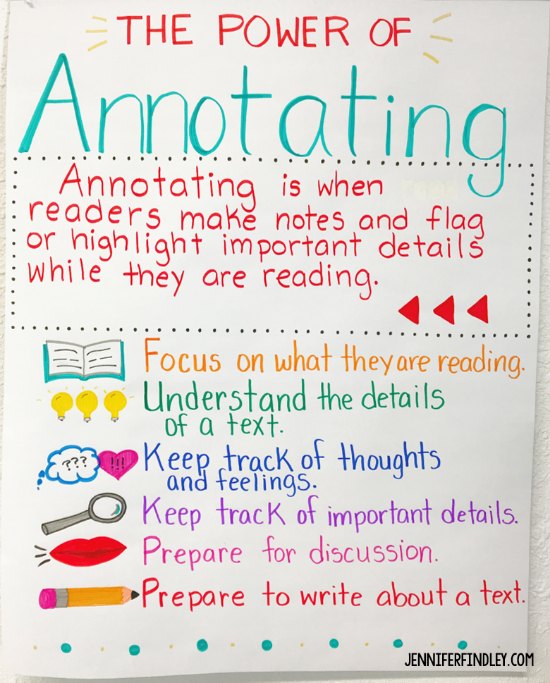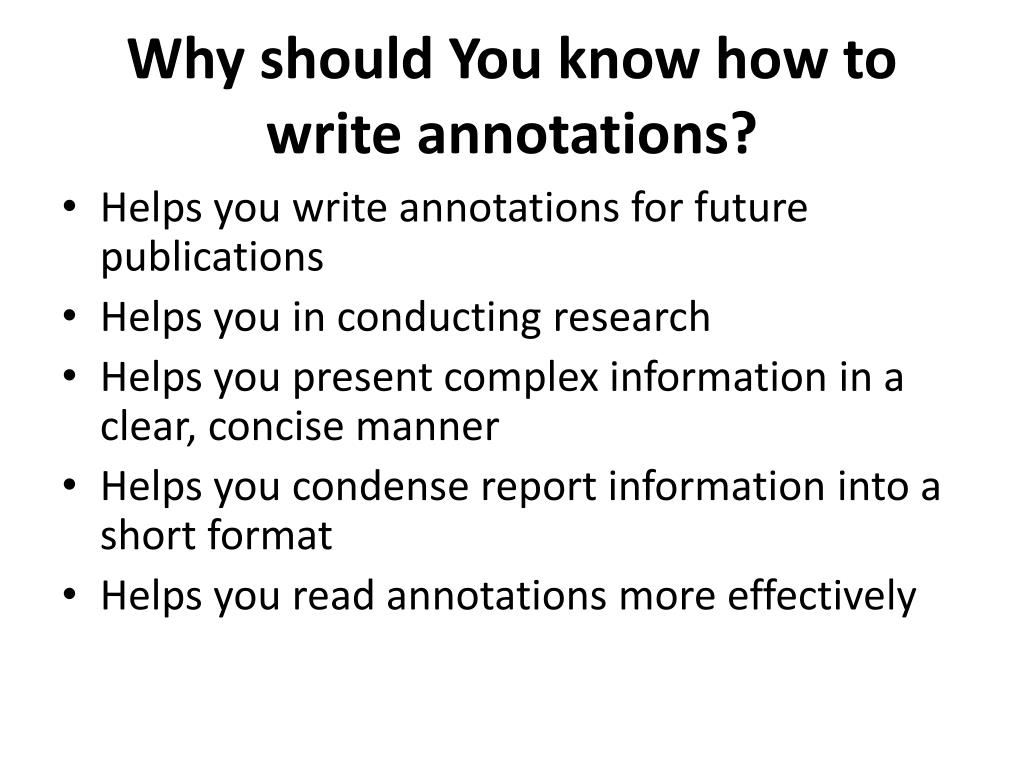

The Elements of an Annotation: Below are some specific thoughts on the elements of academic argument to include in a 300-word annotation: Write it Out: Synthesize and summarize all this information into a 300-word paragraph that follows the below structure.Quotes for Major Elements: Pull out quotations for the major elements of academic argument associated with the introduction (question/problem, method, thesis, stakes), as well as the main assertions for each major section in the body of the essay.Diagram of Evidence: Create a diagram of the kinds of evidence used in the source (textual, historical, citational).That will help me understand the totality of a source on its own terms. Marginalia: Start out by reading a source and making marginal notes on the elements of academic argument (question/problem, method, thesis, evidence, analysis, counter, etc.) as I come across them.The Process of Writing an Annotation: Here's my four-step proces for writing annotations: Mirror the Source in the Annotation: Nor does an effective annotation need to work sequentially through this information often a writer will use the organization of the book/article to structure the annotation, touching upon relevant points from above as they appear in the course of the source.Īdjust as Needed: Moreover, in annotations, it is often possible to combine categories of academic information into single sentences, such as a single sentence that covers both text and method, or a single sentence that covers both method and argument. Writing Descriptive Annotations: For a quick and clean structure for a descriptive annotation, you might include the following elements of academic argument (which are described in more detail below):Įmphasize What's Unique: A good annotation will not necessarily include all of the above information the best annotations draw out the aspects that make a book or article unique and develop quality accounts of these points. As always, the key is to be aware of the situation so that you can ask your instructor what the requirements and expectations are. I encourage students to hold off on evaluation for a bit because it’s best to collect all of your information first (or at least as much of it as possible) before you start making claims about it – but be aware that in other classes you may be asked to do other kinds of annotations. As always, writing helps you understand what you’re reading. Prospective Annotations: What I call a prospective annotation describes and evaluates a source but also explains how you the writer will be using this source in the paper or project you’re working on.ĭescriptive Annotations for Understanding: In my courses, I usually ask for descriptive annotations because I like for students to view annotations as part of the reading process.Evaluative Annotations: An evaluative annotation not only describes but also evaluates the source, identifying its strong and/or weak points.Descriptive Annotations: As the name implies, a descriptive annotation describes, summarizes, or analyzes an article or book – especially its evidence and argument – without rendering a judgment about it.

Kinds of Annotations: Broadly speaking, there are three kinds of annotations: descriptive, evaluative, and prospective: This introduction will help you see how your texts are “talking” to one another, which will allow you finally to revise your annotations to include points of agreement and disagreement (i.e., where the essays complement each other and where they contradict each other). To write a headnote, you should return, after writing your annotations, to the beginning of your document to write an introduction that summarizes the key issues that are covered in the annotations. Headnotes: Some annotated bibliographies include headnotes, brief paragraphs that summarize and give an overview on the general topic of the annotated bibliography. Sometimes you will see annotations that are only one or two sentences, but usually a good annotation runs between 200-400 words. The design and length of an annotation vary based on its purpose and the discipline you’re working in.
#WRITING GOOD ANNOTATIONS SERIES#
An annotated bibliography is made up of a series of annotations, or brief notes about each of the sources.

Annotated Bibliographies: An annotated bibliography is a list of sources that you have read and plan to include in a research project.


 0 kommentar(er)
0 kommentar(er)
